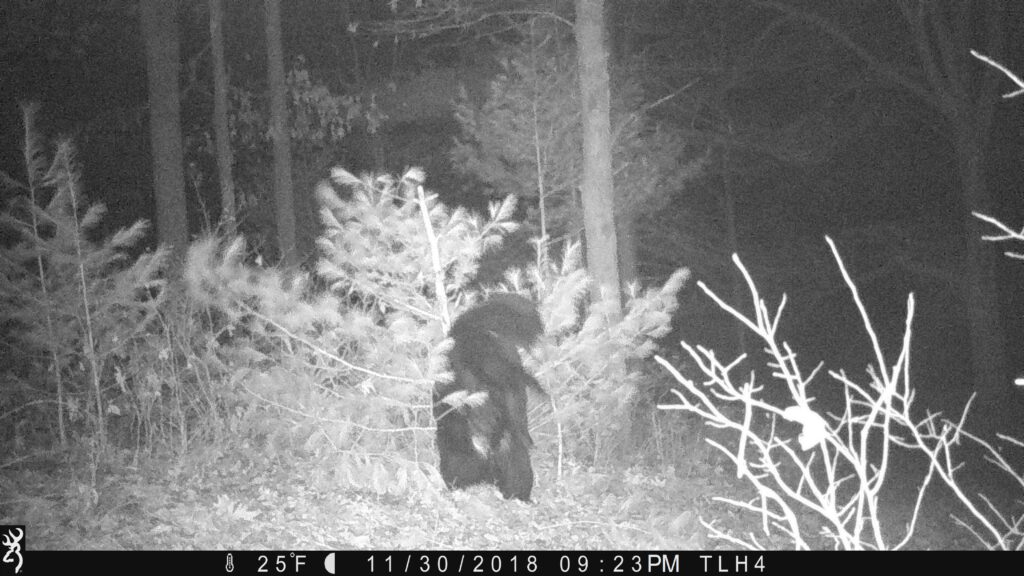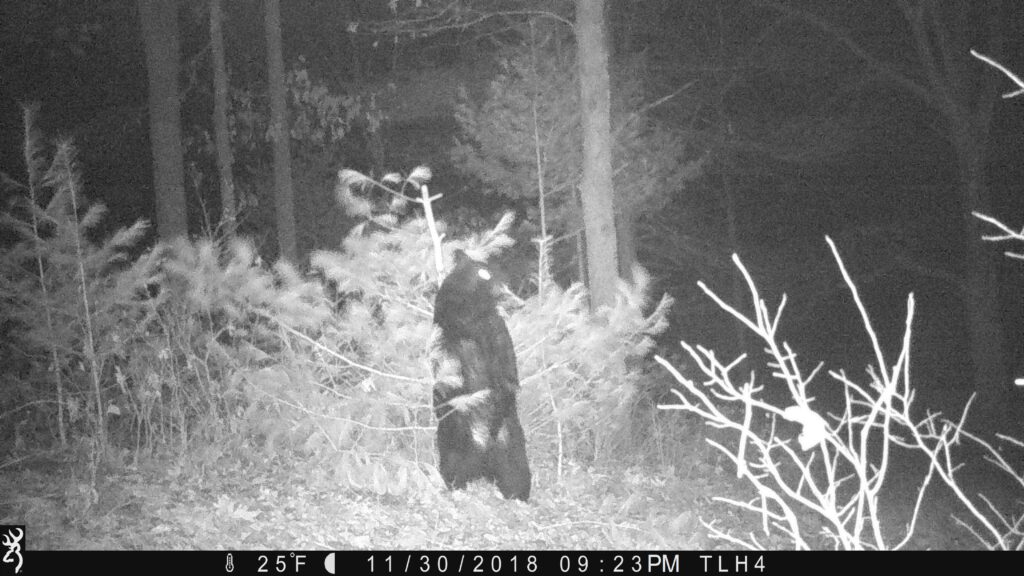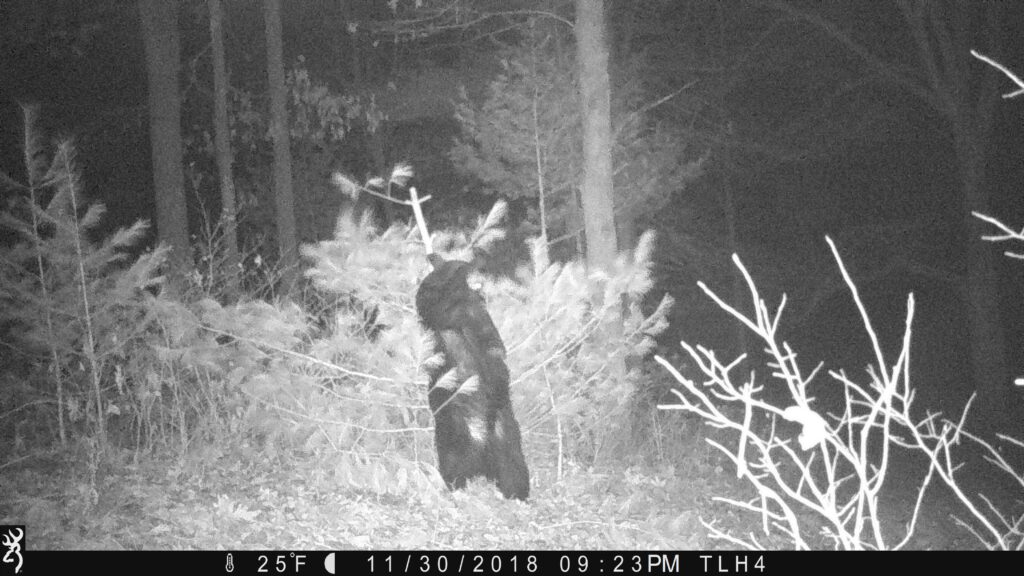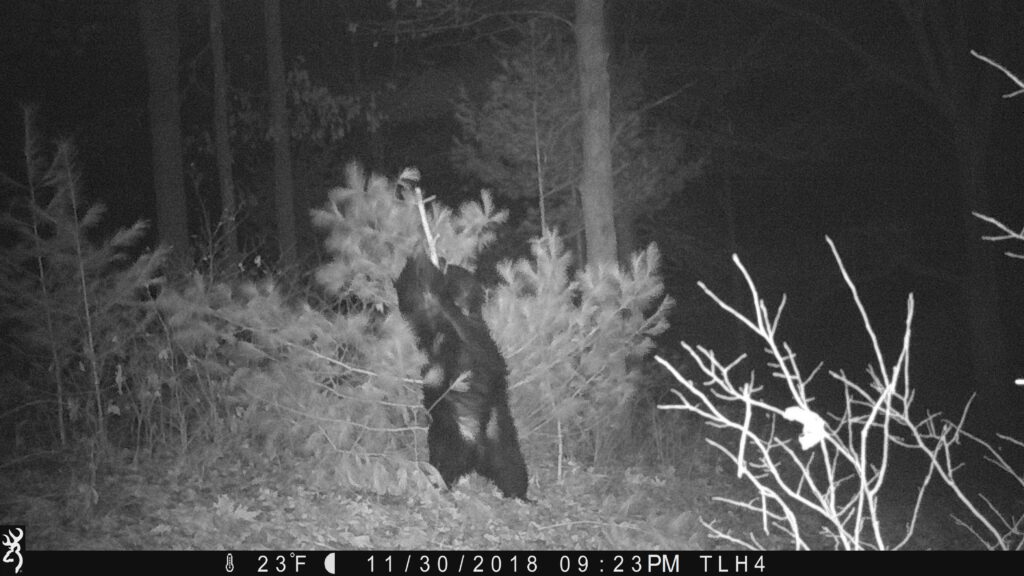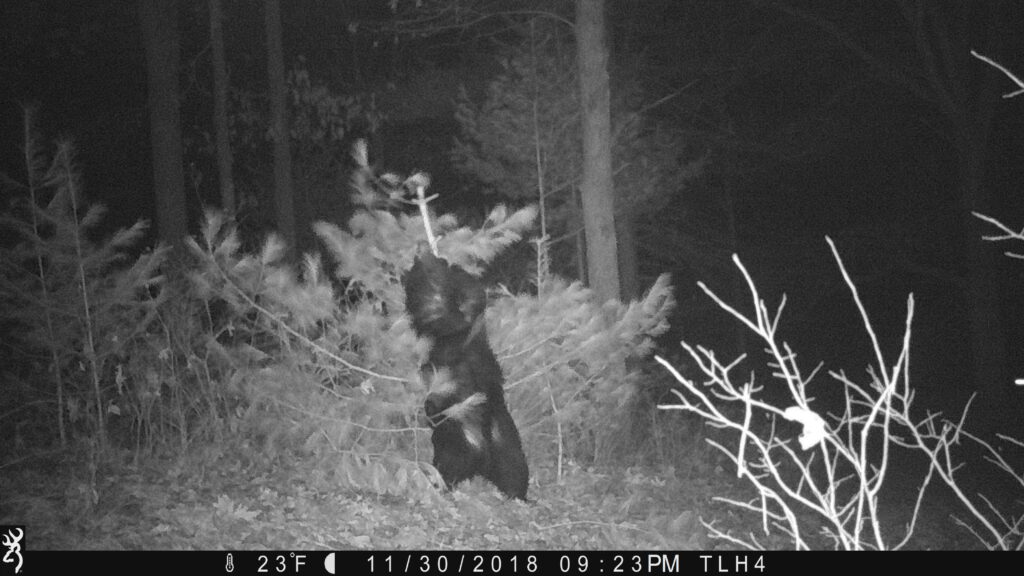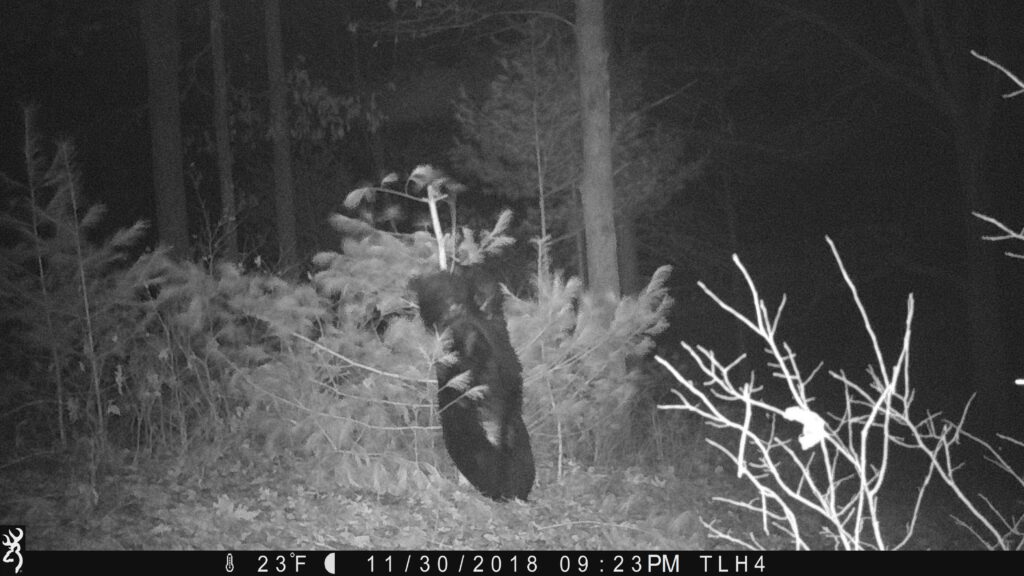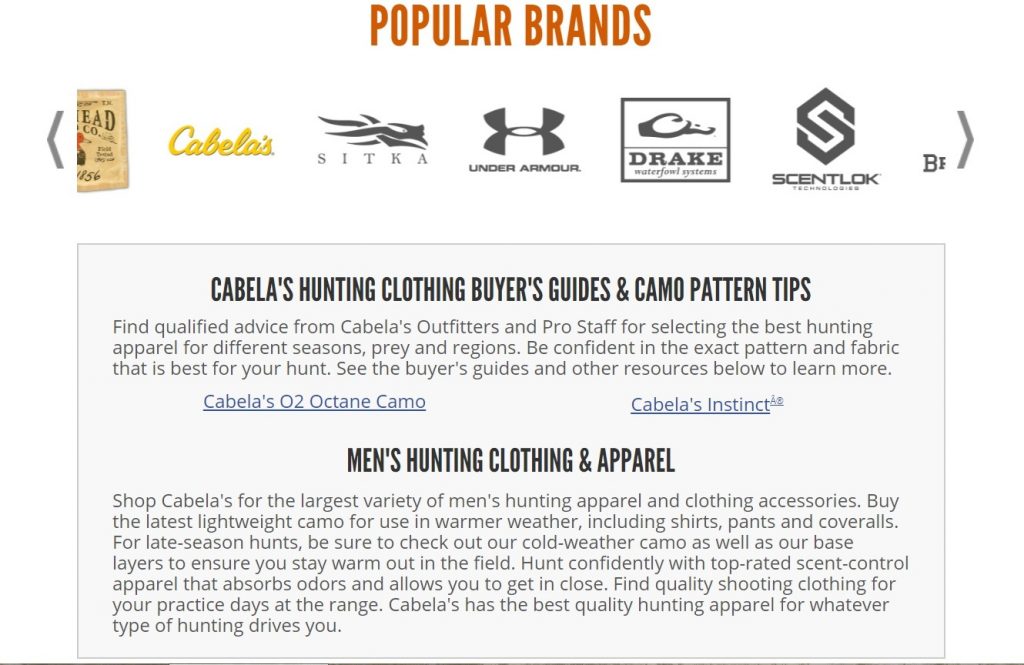Posts Tagged → gear
Irv’s summertime camping gear recommendations
Summertime Camping Equipment Review
The good, the bad, and the ugly….maybe
by
Irving Krasnoshtayn, Special Guest at joshfirst.com
When I was a kid, my family did not go camping. There was nowhere to go. The “open space” in Brooklyn, New York, was the little crack between the concrete slabs on every sidewalk where small sprouts of grass grow. Football, hockey, even baseball games were played in the street or in a crowded public park if one was near enough. People in tents were known as homeless. The first time I went camping was with a bunch of college friends over 20 years ago. It was a poorly planned and ragtag experiment, by guys with more spirit than knowledge. We brought an axe and chopped our own firewood, and then thought we were real outdoorsmen. More than anything we all got giant blisters on our soft city hands. Lots of things have changed since then, but my enjoyment of camping only grew from that one fun misadventure.
Fast forward just a few years and now I am the dad with little kids who excitedly ask me about camping over summer vacation. But unlike my childhood, society today is a lot more mobile, and outdoor recreation is a lot more widespread, common, and much more easily accessible. When you have a couple kids and a wife, you have to think not only about the easy, happy family coziness, fresh air, and the sunshine aspects of camping, but also about everyone being comfortable, repelling bugs, people going potty in the middle of the night, and having decent food. Meeting all of those goals with a family means that we get to try out a lot of camping gear, albeit mostly car camping and not always wilderness treks. Our destinations are usually commercial campgrounds and state and county parks. So here’s my honest review of some things I rely on when family camping. I know there are plenty of dads and moms out there who are hungry for this kind of information. Links to many of these items are below.
Tents: I have two tents, each costing around $100. One a six-person and the other an eight-person, both made by Coleman. But those sizes are a lie because each tent fits two people fewer than advertised, especially with all their gear. You have to think about keeping your stuff dry inside the tent in bad weather, so a backpack takes up the space of a person.
These Coleman tents are relatively easy to set up and they have been reliable. But buy a bigger tent than you think you need, unless you will be backpacking it on a mountain. In which case you will want the absolute lightest gear, which is a whole other story. Use strong steel stakes, they don’t bend as easily as aluminum and last longer. I also put down a cheap tarp on the ground slightly larger than the tent, to take off shoes before we get into the tent and to protect the bottom and keep it from tearing.
Sleeping bags: I have owned more sleeping bags than I can count on both hands. This key part of camping has been a long process for me, and I hope you can learn from my mistakes. In the course of learning sleeping lessons while camping the hard way, I have discovered I really don’t like mummy bags. Mummy bags are sold as a common camping cure-all, but they best fit small framed and narrowly proportioned people, while I want room for my tree trunk legs and wide shoulders. Don’t buy a bag from an unheard of company, like I have, while trying to save money; you will end up paying the real price in comfort and enjoyment, which is worth more than money. At the lower end of the price range, say around $40, Coleman makes decent sleeping bags. Some have cotton lining, some nylon, some acrylic, some flannel, but either way make sure you like the particular material against your skin before you walk out of the store with the bag. I have used everything from 20 degree bags to 50 degree bags, and absolutely none are as warm or breathable as they claim. Until you test your bag and understand its real limits, make sure you bring extra base clothing to keep warm at night. A drinking bottle filed with hot water can help overnight. Coleman’s Brazos is a decent model. A stuff sack for storing the sleeping bag short term is great to have too. To preserve their fill loft, sleeping bags must be stored long term either hung up hanging freely, or in large sacks that do not compress them.
Sleeping pads: One of the most important things I have bought for camping is a sleeping pad. I like a comfy sleep, what can I say. Once you sleep somewhere rocky you will understand why a good sleeping pad is important. Besides, I’m getting old and want to be comfortable. Walmart sells a cheap roll up pad like the military uses that is about a half an inch thick, and that is the minimum I would recommend. I highly recommend the best pad you can afford, either closed cell foam or inflatable. I have one for each family member of different types and thicknesses. The egg crate type is not bad but I prefer a firm type made of open/closed cell foam.
I own a few self-inflating pads but I’m afraid they might develop a hole and deflate like happened to me once. I like reliability, which the closed cell foam has.
Pillow: When camping with our car, we bring our pillows from home. When backpacking I take one of two inflatable pillows, but some people just bring a pillow case and stuff it with their clothing. That works.
Fire: Although I own many axes, such as the decent Cold Steel axe, I now rarely use one while camping. Instead I use a few different saws to get my firewood. Silky saws of Japan makes the best saws money can buy. The Silky Gomboy with medium teeth is the most comfortable and fastest cutting saw I know of besides using a chainsaw. Their teeth are wider than the spine so they cut very well and don’t bind. They are a pleasure to use but have been known to snap if used forcefully. Take your time and let the saw do the work. They can be found on sale for around $40 and like all good kit, are well worth it. Get the largest one you can afford. “Project Farm” of youtube fame recommended another couple of saws. I will be “real world” testing them soon.
Fire Starting: This is something I have practiced extensively and have found campers need to carry more than one way to start a fire, and know how to use each one. Yes, Bic lighters are a go-to but when it is freezing, snowing, or raining they may not work. Always carry your Bic/gas lighters on your person in a pocket, and NOT in your pack. The reason is your body will keep the lighter warm and the contents in a fluid and flammable state. If the lighter is really cold, the butane will not turn into a gas when you try to light it and it won’t work. Zippo lighters are okay as long as they don’t get wet or leak.
Wind is another reason I don’t rely on gas lighters or survival matches. If you do buy survival matches, make sure the container is waterproof and they are the type that can stay lit underwater. Yes they make those. I used a waterproof pill container filled with LIFEBOAT matches and cotton balls for my kids.
I have made videos throwing every type of lighter or match into a half foot of snow or a bucket of water, and the only thing that was reliable was a Ferrocerium rod. Known as a Ferro rod, I now buy them in bulk and make handles for them out of spent rifle cases. Use the spine of your knife and you will make all the sparks you need to start a fire.
At home I prepare a few cotton balls dipped into Vaseline, and store them in a small Ziploc bag. They have the added benefit of protecting your skin/hands. A Ferro rod will light one immediately and the Vaseline in it will burn for a good minute or two, if not longer. I will sometimes make feather sticks which a Ferro rod will also easily light if done correctly. I own magnesium fire starters, and they work, but they aren’t necessary. Again if it’s windy, the magnesium will often get blown away. Some people like to use military trioxane, but this extra expense is not necessary.
Camp chair: Bring a chair for each person if you can. This is advice that is easy when car camping and very difficult while backpacking. I have not yet found a lightweight folding chair that I like.
Cooking: I have spent hundreds of dollars on a titanium stove and the latest everything else for cooking, and have concluded just a few items are all I need to cook good food while camping. Stanley makes a $30-$40 frying pan kit which is worth it. Titanium frying pans which I own are lightweight but develop hotspots that then cook unevenly. The Stanley frying pan kit cooks everything evenly and comes with two plates, and a take-apart spatula that is almost priceless. Stanley also makes a few other kits including a pot kit and a mug/cup kit which are also very good. I have used them all extensively, and they develop a blackened bottom with open fires. Someone scientifically tested blackened pots and it will boil water approximately a minute faster because it absorbs the heat better. I have a lightweight folding stainless steel grate for chicken, hot dogs and burgers. Works great. I like a titanium cup for quickly boiling water for making tea or a ramen type meal. Lightweight Titanium spoons and forks are also worth buying. Better than any plastic.
Stoves: I like and own many packable wood stoves. The Solo stove is GOOD. It burns wood very efficiently and fast. Sometimes too fast, so you will need a lot of twigs on hand because it doesn’t hold much and you have to keep adding to keep the fire going. Esbit stoves don’t heat up enough for my liking and alcohol stoves might work, but I don’t want to carry alcohol that I can’t drink. Firebox makes quite possibly the best balance of reliability, compactness, yet high capacity wood burning stove on the market. It is amazing and I highly recommend it. The Firebox Nano model is tiny yet unfolds large enough to cook a morning meal without any fuss.
Cooler: I prefer hard sided coolers, because they keep their shape and hold ice overnight, even in the hottest summers. They also repel the sharp claws of raccoons.
Lighting: You will need to see when it gets dark. I prefer headlamps over flashlights because they keep both hands free. I bring one for each person, even the kids. I give out glow sticks just to see where other people are. Any headlamp over 200 lumens is good. Wide beams are more useful for close range. In my work as an electrician, I use headlamps every single day. The cheaper brands have always failed me because they use cheap circuitry and switches that eventually fail just when you need them most. Energizer makes many excellent headlamps.
Eveready makes a good model for $10. On the higher end, Petzl, Streamlight, Black Diamond, Fenix, Surefire and many others make very good lights. Don’t buy a crappy light, because you don’t need to. The good ones don’t cost much more than the really bad ones. I don’t use rechargeable batteries when camping, because unless you have solar panels how are you going to charge it? I’m not going to carry a battery power bank. I bring an extra set of fresh batteries. [Editor’s note: I have used two different Anker solar chargers on long distance ten-day backpacking trips and they work well when matched with the right battery – JF]
Rope: Buy some paracord and keep it in different places where you might need ten or twenty feet of it. Home Depot sells a decent paracord. The brighter colors are better, because your eye will see them and stop your feet before you trip over them when they are guyed out around a tent or a tarp shelter. Also useful for tying down your stuff in strong wind.
Duct Tape: I like gorilla tape. It sticks better than any duct tape I have ever used. Wrap a few feet around something like your lighter.
Multitool: I prefer Leatherman. The wingman model has scissors, a pocket clip, and is relatively light.
And finally, knives: Few outdoor items are more iconic or representative of camping than a fixed blade knife or one of the newfangled, robust, easy-open folding knives. Everyone has different sized hands and skin, so everyone prefers a different handle material and shape, and thicker or thinner, longer or shorter. There are so many knives on the market, I should begin by telling everyone to always carry a pocketknife. Preferably one with a locking mechanism so it doesn’t accidentally close on your fingers. Swiss army knives are OK for home use, but I don’t prefer them as a daily pocket carry.
Fixed blades are also necessary. I’ll start by recommending the least expensive of the bunch, Mora knives of Sweden. They are the best bang for your dollar at the moment. I recommend stainless steel over carbon steel so that your knife won’t rust, and if there is one thing you are guaranteed of on a camping trip, it is that your knife will get wet and it won’t get put away dry.
At around $20, the Mora companion model is a great knife for many reasons. It has a comfortable handle and an excellent sheath which clips onto your belt without you having to take it off. Mora uses a Scandinavian grind on their knives, which is excellent for “Bushcraft” type work, which is a variety of light to heavy utility work, plus food preparation. I prefer full flat grinds which are much more versatile, particularly for food preparation.
ESEE knives have an unconditional lifetime guarantee. They come in 1095 high carbon steel which may rust if not cared for. (Use vaseline from the cotton balls or plain mineral oil to prevent rust)
I used the ESEE 4HM model (~$120) for an entire camping trip and found it excelled at everything. GREAT knife.
In the Outdoors, the sheath is just as important as the knife.
First Aid Kit: Always carry some type of first aid kit and know how to use it. I was an EMT, and based on my experience I think everyone should at least learn the basics. Know how to stop bleeding with pressure or how to stabilize/support a sprained ankle. Accidents happen, be prepared, and having a good first aid kit is step one in being prepared. Car camping first aid kits can be almost like a mobile field hospital in size, and backpacking first aid kits must be streamlined and geared towards treating foot blisters, burns, and knife cuts.
I put together my own first aid kit in a one- gallon waterproof Ziploc bag, including everything from Band-Aids to gloves and gauze to common medications like ibuprofen and aspirin.
Have a great summer camping with your family!
LINKS:
tents:
sleeping bags:
| Coleman Green Valley 30°F Cool-Weather … |
sleeping pads:
Foam Sleep Pad- Extra Thick Camping Mat for Cots, Tents, Sleeping Bags & Sleepovers
Saws:
Silky GomBoy Professional Folding Saw 240mm Medium Teeth (121-24)
| Silky GomBoy Professional Folding Saw 2… |
Samurai KISI FC-240-LH / 9 1/2″ (24cm) Folding Curved Blade Saw Made in Japan
| Samurai KISI FC-240-LH / 9 1/2″ (24cm) … |
Fire making:
Cooking: pots pans
Stoves:
| Lite Camp Stove | Solo Stove |
|
Headlamps:
Knives:
ESEE 4HM Fixed Blade Knife w/ Kydex Sheath & Micarta Handle
| ESEE 4HM Fixed Blade Knife w/ Kydex She… |
Reflections on 2020 bear season
As if by magic or just the batting of an eyelid, the much anticipated 2020 bear season is now behind us, having concluded at dark yesterday. Sad to see our friends go; we had such a fun time! The last of our bear hunting guests have left, cleanup has commenced, preparations are under way for Thanksgiving, and there are some reflections to be had on bear season.
First, where the hell were the bears? Serious question here. We hunt in a mountainous Northcentral area that is Pennsylvania’s “Bear Central.” And despite us daily scouring a lot of remote, very rugged territory that is usually home to lots of bears, we saw neither bears nor bear poop. None. It could be the warm weather has bears hunkered down under cool overhangs in even more remote places. It could be the low acorn crop has bears going in to hibernation early, because there is no more food for them to eat to put on the extra fat they need to hibernate successfully. The truth is, no bear tracks or poops have been seen around here for months, which is remarkable. I cannot think of any year prior like this.
Second, where were all the hunters? We heard only a few shots between Saturday and Sunday, and either none or one on Monday, and for sure none on Tuesday; and very few hunting parties were on the radio on any day. This means that few large scale hunting drives were going on. Without hunters moving across the landscape, the bears don’t have to move out of their way. They can just sit still and not run the risk of exposing their rib cage to a hunter’s bullet. That means that the bears can loaf about in some remote corner, escaping the unseasonable warmth or just waiting for the wafting human scent to drift away before making their usual rounds again. Which means the few hunters who are out don’t see much action.
Third, where were all the other critters, like turkeys and deer? Like with bears, we saw very little deer or turkey poop in the woods. And although I myself saw two whopper bucks and a five-point up close, no one else saw any deer. Nor did any of us see any turkeys. Once again, the absence of these otherwise ubiquitous animals could be due to the relative absence of acorns. Which would push the wildlife far afield to find food sources.
Fourth, despite all of our hunting setbacks, did any of us care a bit? No! We missed all of our friends who could not be with us for various reasons, like fear of the CCP virus, or family emergencies requiring them to stay at home. But those of us who gathered had a lot of fun nonetheless. And with or without a bear on the game pole, we would not have missed this time together for any reason at all. We caught up on our families, our work, our homes, cars, friendships, wives, and politics (yeah, there was a lot of pro-Trump politics). Some people drank way too much alcohol, and we got some great pictures of it all, like the one guy asleep on the cold ground outside. No, we don’t post those here. We ate like kings, that is for sure, and no one lacked for food or drink.
Finally, it is possible that the new early bears seasons (archery, muzzleloader, and special junior+ senior rifle) are removing so many bears from the woods that come rifle season, very few huntable bears remain to be had. According to real-time hunting harvest data posted at the PA Game Commission website, more bears were killed in the early seasons than in the official rifle season this year. This means there are fewer bears available for the rifle hunters. It is possible that many hunters expected this, based on last year’s harvest patterns, and they stayed home or hunted alone, instead of joining the big crew at camp, like usual. As of late today, just 3,138 bears had been killed total this year. That is about a thousand fewer than expected.
Based on this raw data alone, the early bear seasons are actually backfiring. They are not removing the high surplus number of bears that are beyond Pennsylvania’s social carrying capacity. Rather, the early bear seasons are removing the easiest bears and leaving few to be hunted in the later rifle season.
And this new dynamic could be the real story in PA’s bear season: There are so many early season bear hunting opportunities for individuals that they collectively take the wind out of the sails for the regular season hunters, thereby having a boomerang effect on the entire thing and limiting it.
We won’t know what all this data really means for another few years, and by then either great or even fatal damage will have been done to Pennsylvania’s traditional bear camp culture, with its big gatherings and big drives and big camp camaraderie dying out, or we will simply all have to learn to adapt to new ways of hunting. I have to say, there is no substitute for men gathering at a camp to hunt together. The gathered hunting party is the most human of experiences; it is an institution as old as our species. Its purpose was not just making meat, but also social and sociological.
I sure hope these myriad new early bear seasons are not self-defeating, in that they do not kill that traditional bear camp culture by removing its whole purpose ahead of the game. Question for the PGC: What incentive is there to push your body hard through rugged and remote landscapes, destroying your boots, tearing your clothing, and often losing or breaking some of your gear, including damaging your gun, when the animal you are seeking has already been removed?
Below are some photos from one of our trail cameras two years ago. Just days after bear season ended, a bear was caught gloriously and most joyously rubbing its back against a young white pine tree. Almost like a pole dancer. Pretty hot hip shakes there. We haven’t seen a bear anywhere around here since May this year.
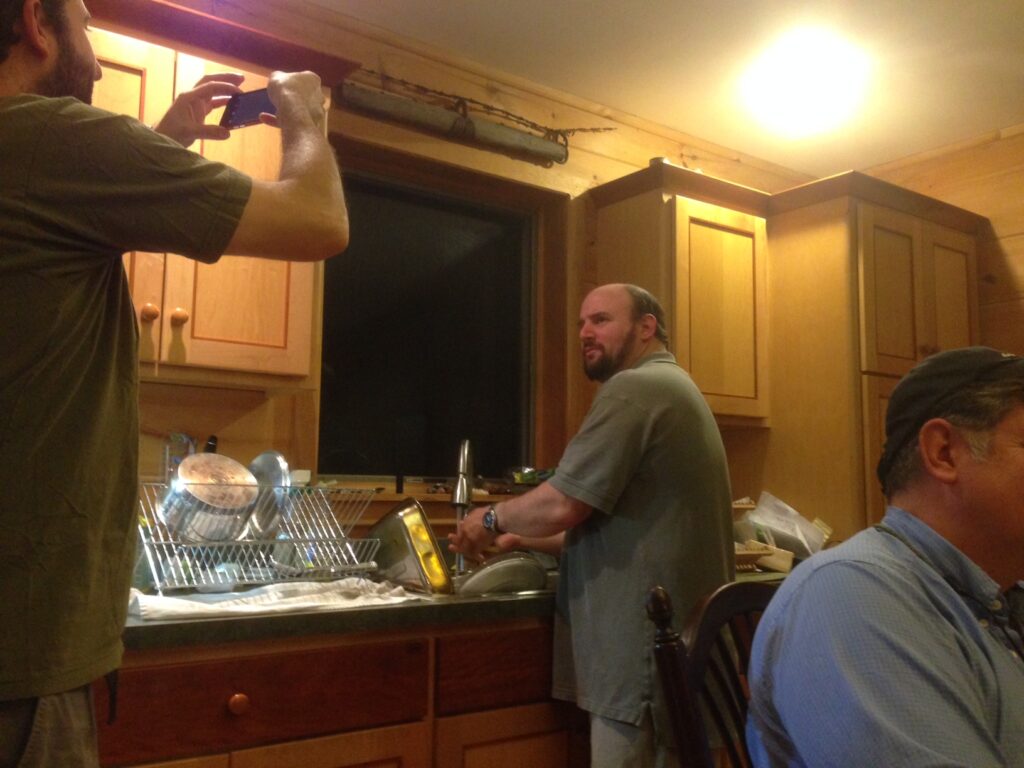
When one of our guys is finally browbeaten into washing dishes after years, it is cause for “Notify the media” acts like taking his unhappy picture. This is back in 2015. He still has to be browbeaten into washing the damned dishes

Lycoming County is the boot-looking shape in the northcentral area. Its northwestern corner is where we hunt. The darkest township there demonstrates the importance of organized hunting drives. A bunch of large hunting clubs are located in this area, and their members put on highly coordinated, obviously successful drives.
Cabela’s-Bass Pro merger = Lower Quality for Sportsmen
[UPDATED SEE BOTTOM for IMPORTANT DETAILS] Cabela’s hit its stride about ten years ago. A national, trend-setting family-owned outdoor business, the company took from the best and discarded the rest. Innovation there never stopped, as they improved on Zeiss-quality optics made for price-pinched Americans, and innovated rain-proof soft fleece parkas suitable for stalking deer with a recurve bow in wind, rain or snow, and all combinations thereof.
No one else made these products, and certainly not at their prices.
Some might say that Cabela’s took the best names and put their own name on it, and there may be some truth in terms of boots and optics. But when it came to outdoor clothing, the company did its own thing, making outdoor sports so much more fun. Every now and then they would do a run of virgin wool hunting shirts. Outside of Filson and Pendleton, it is tough to think of virgin wool shirts being offered anywhere else. While the Cabela’s shirts were not near the quality of the Filson or Pendelton, they were not anywhere near the price, either. These were true working wool shirts for a fair price that you would not regret tearing or getting soaked in bear blood.
Perhaps there are some industry insiders with a tale to tell here, and I would stand corrected if proven wrong.
Along came competitor Bass Pro a few years ago, and bought out the Cabela family. The merged Cabela’s-Bass Pro union made little sense for innovation, and those outdoorsmen who greatly benefited from Cabela’s unique service held their collective breath. Bass Pro has been known for marketing all the usual stuff, plus a lot of Chinese junk, and also their own RedHead label clothing and some equipment.
RedHead has been around for a long time. An LC Smith 20-gauge double barrel in my care came in its apparently original Red Head canvas case. Nicely made, quality product. From the 1940s, when just about everything was made with pride.
Fast forward to now and RedHead is not known for high quality, or for innovation. It is mostly slapped-together variants of better-made products by Cabela’s and others. I guess the wool socks are pretty good. But most of it is not high quality. At all.
So fast forward to me getting on-site freezing-rained out of a distant hunting trip I had planned all year. All of the usual high quality equipment that has worked for me all these many years would not have worked under the unusual wet and very cold conditions I found myself in; in fact, had I stayed out there in that freezing rain, I would have undoubtedly gotten hypothermic and probably died. My kit was not designed for that unforeseen situation, and so I hightailed it out of the back country and glumly slunk home. No deer is worth dying for.
But I feel determined to never have this happen again. We get so few of these opportunities as it is; once we are out there in the middle of nowhere, we must take advantage of all the hunting time there we can make.
Subsequently looking for new clothing and kit capable of both light weight and all the other properties has left me slack-jawed. The Cabelas-Bass Pro merger has resulted in a really narrowed field of high quality outdoor clothing and kit. Instead of maintaining Cabela’s high standing products and focus on continuous unique product development, Bass Pro has cut off the innovation pipeline, used inferior materials in successful old product lines, and substituted other more expensive makers like Sitka and ScentLok for the old standby Cabela’s brands.
Very few of the high quality products that Cabela’s made, like lightweight, waterproof, silent parkas in different camouflage patterns, are available any longer.
So it seems that the merger has not benefited sportsmen, and that Bass Pro is just slowly squeezing whatever value it can get out of Cabela’s before it eventually shuts it down and forces sportsmen to consider the solely mediocre stuff that Bass Pro specializes in.
So for those of you who enjoy shopping for high quality outdoor gear, get ye to a local Cabela’s store soon. Look on the closeout racks for the stuff you used to take for granted; it won’t be coming back. Buy the old Cabela’s stuff before the company is openly yet one more victim of short-sighted corporate greed and sloth.
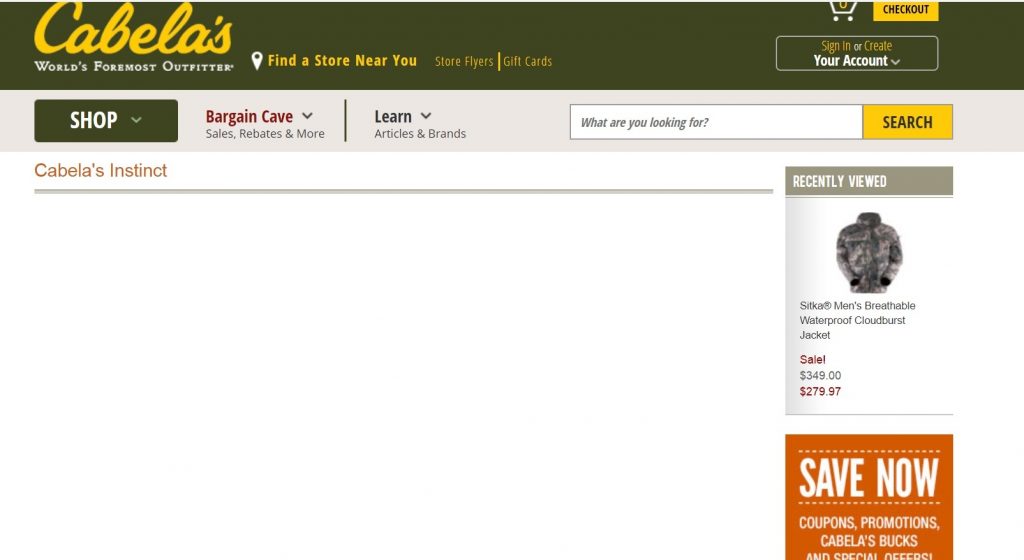
you clicked on the Instinct button and….and there is nothing there. Under Bass Pro ownership, Cabela’s is abandoning its long history of gear innovation and product design specifically done for serious hunters.
UPDATE 12/15/19: Turns out there was a much bigger reason for the downfall of Cabela’s. Here is the kind of in-depth reporting that Americans deserve: https://youtu.be/UatnTSwEUoc
My electrician buddy Irv reflects on cold weather gear and life lessons
“We have been so fortunate (full sarcasm) to get some very cold weather recently well below freezing. Some days well below zero degrees Farenheight. Since i work out in the field, i was able to test the reliability of things i typically carry and use in my daily life. For testing purposes i left all my gear in the trunk of my car overnight.
I find that little details matter so much more when the elements of weather are involved.
The conclusions:
Cell phones freeze. Keep yours warm next to your body preferably inside layers. Sometimes pants pockets are not warm enough. Ask me how i know.
Flashlights:
i recommend covering metal handled flashlights with electrical tape or your hands will freeze quicker. Even with gloves.
LED bulbs are much more efficient, reliable and today have amazing light output.
I junk binned every incandescent flashlight i had. LED’s are that good.
Batteries:
AAA batteries. They all freeze too easily and drain too quickly in flashlights. They only have one third the capacity of AA batteries. So i now only use them in tiny devices and above freezing temps.
AA batteries have proven reliable in all my flashlights/headlamps. They usually freeze below 15degrees but if kept close to my body in a jacket pocket they will still work decently.
ALL batteries eventually freeze below zero degrees. But lithiums have been the most reliable. They are the only ones that still work below zero.
My cordless drill batteries are all lithium. I depend on it for my living. NiCad batteries just dont work below freezing.
Lighters:
My bic lighters did not freeze but i could barely get them to light around zero degrees. Because it relies on the liquid/gas changeover, it takes longer to become gas and light up.
If kept close to the body in a pocket it will light up more readily.
Forget torch lighters. I haven’t found one yet that will reliably light below freezing.
Zippo lighters are OK. They work but the metal is hard to hold when so cold.
Tools:
Tool handles become so important that i can’t stress it enough.
An old stanley utility knife becomes impossible to hold for any length of time. Simple Rubber overmolds make it an afterthought. And Electrical tape really helps insulate handles.
For cars/trucks:
Always have jumper cables in every vehicle. I suggest at least 10feet of #8 gauge wires or thicker. Preferably #6awg.
Keep basics like a small first aid kit in the glove compartment. I keep tylenol, advil, Anti-biotic ointment, Bandaids, a couple pieces of sterile non adhesive gauze dressing, and surgical tape. That will treat almost all basic emergencies.
Always have a bottle of water in the car. Always.
Did you ever have to change a tire in zero degrees in the dark? Make sure you are prepared. Keep a headlamp in the glove box. You will need both hands.
Clothing:
Wear breathable layers, but the outside layer should be water resistant. I dont like plastic/vinyl jackets unless its raining or snowing. Good boots are priceless. Dont skimp. I wear wool socks. Worth every penny.
If you need any advice on a particular product just ask. I have and continue to test all kinds of gear and will readily share the knowledge.”
Great American Outdoor Show is in Harrisburg, and it is Fantastic
The Great American Outdoor Show, which used to be called the Eastern Outdoor Show until the former promoter turned anti-gun and tried to block vendors from showcasing their modern sporting rifles, is on and happening in Harrisburg through Sunday.
I have been volunteering a bit for the PA Federation of Sportsman’s Clubs, not nearly as much as I have in the past, but still contributing and selling raffle tickets to friendly people who visit the booth.
Last year the Federation raffled off a Bushmaster AR-15, and this year we are just doing cash. Right now the pot is a few thousand dollars, and by the time the raffle is drawn it’ll be much more. Some of the proceeds go to support the Federation, so it’s a good cause.
I stopped in to visit the Unified Sportsmen booth the other day, but the person I sought was not there and the volunteers were just leaving, but I am looking forward to hearing their perspective on sportsmen’s issues.
The River’s Edge canoe and kayak sales by Neill and Evelyn Andritz sold me on a Hobie kayak. But let me tell you, these kayaks today are not your Nanuk of the North kayaks of old. My friends, these things might as well be on the space shuttle for when our guys find water on Mars, because they are nothing like the sloppy, floppy, tipsy, floating death traps we used to squeeze ourselves into. Today’s Hobie kayak is a blended hybrid, using the best qualities of canoes, surf boards, and kayaks to bring small-craft fishing into the 22nd century. The Mirage Pro Angler 14 and the Mirage Outback were the two I had to choose between in the end, but being a “Big Guy” means that the 600-pound capacity of the Mirage Pro Angler is a must-have.
And beyond the fat-guy-and-all-his-gear capacity, the technical bells and whistles are amazing. Stand-up stabilizing bars, leg-driven flipper drives that look and power like an orca tail, bait coolers, adjustable seats that would be at home in a Maserati, sleek rudder controls you can use with your elbow, hand, or foot, storage lockers running the full length for stashing kit so big you can harpoon the shark of your dreams, rod holders everywhere, holes for masts, and so on.
And all this above is about just one vendor with two small self-powered boats I liked in the Farm Show complex that is loaded to the gills with gear, knives, guns, outfitters from around the world, specialty clothing and footwear, trophy services, archery gear so sophisticated I feel like I am Stone Age when I handle it, RVs, ATVs, camping gear, bug-out survival gear, and so on and on for much more.
The Great American Outdoor Show is worth visiting if for no other reason than to say you went and witnessed one of the wonders of the world. It is the biggest show of its kind in the world, and even if our new governor, Tom Wolf, isn’t interested in attending (incredibly that is true), you definitely should.
A plea for a small slice of reality
Marketing hype for any and all kinds of products has resulted in any and all kinds of hilarity, humor, bloopers, and ironies.
Hype, by its nature, kind of skirts facts and embellishes upon irrelevancies. Thus does hype almost inevitably lead to unintentional silliness.
For whatever reason, the outdoor sports are loaded with marketing hype.
Trail cameras are notoriously both marked by near-claims of X-Ray vision and simultaneous failures to perform their most basic functions.
Clothing that keeps your funky, unwashed armpits from making deer say “Uncle!” is another proven fraud.
The list goes on. I won’t belabor the list.
What really irks me are the male and female models used to promote outdoor gear, and specifically I mean hunting gear.
Cabelas, Bass Pro, Eddie Bauer, LL Bean, and many advertisers in Field & Stream magazine all use models for hunting gear who look nothing like hunters.
Probably universally, the guys are either effeminate, urban, slender professional model hipsters from NYC with a day-old facial hair growth, or they are occasionally hunting “stars” whose annoying braggadocio, bravado, machismo, and one-dimensional arrogance inspires mostly dismissiveness.
Neither of these model types fit the mold or image of real world hunters. Like me, probably you.
For example, I’m well overweight and struggle to make time to exercise, because being a husband, father, and small business owner all preclude time for developing hour-long fitness routines and pumped biceps.
And neither I nor any of my friends aspire to look effete, lanky, or effeminate. Our problem is probably that we don’t spend enough time cultivating our looks, complexions, or clothing fit, because these are unimportant sideshows in a life of meaning and real substance.
Hunting is, after all, about woodcraft, a conservation ethic, stealth, mastering one’s emotions, mastering firearms and bows, teaching our kids these skill sets with patience and love, and so on. Studly macho guys would be quickly drummed out of every group I hunt with. Hunting has zero to do with being macho.
So a simple plea here for reality: Use models who look like us Average Joes. We are much more likely to be interested in your products when you use people who actually look like us. Sinewy urban guys struggling to look male don’t interest us, and selfish guys who wear tinted contact lenses and who spend time on their biceps instead of their community don’t interest us, either.
Kelty — An A+ American company
Kelty makes all kinds of outdoor equipment. Tents, sleeping bags, you name it, they make it. And they back up their gear with a lifetime warranty.
Example in point, my Pacific Crest backpack is a huge old dinosaur of a pack. It holds all kinds of stuff, has a sleeve for either a bow or rifle, and can easily carry 80 pounds without showing a sign of stress. Two weeks ago I sent this pack in for some rehab work.
Two weeks later, it arrived completely refurbished, at no charge. “Pride in our construction” says the zeroed invoice.
Kelty — a fantastic American company cut from the old mold.
Make sure to give them your business, folks. They’ve earned it.
